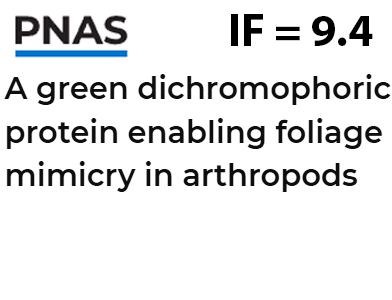Press-room / Digest

Mechanism of Translation Termination Revealed
Protein biosynthesis by the ribosome is one of the most important reactions in nature. The length of the polypeptide chain is strictly determined by the start and stop codons in mRNA. Translation termination is necessary for the timely completion of protein biosynthesis and the release of the polypeptide product from the ribosome. This process is regulated by specific proteins, the so-called "release factors", which recognize stop codons and mediate the hydrolysis of the ester bond in the peptidyl-tRNA molecule localized in the catalytic center of the ribosome. The new study shows the role of the release factor and the 2'-OH group of tRNA in the catalysis of polypeptide cleavage through the formation of a "bridged" cyclic intermediate. The work was published in the journal Science. Learn more

The molecular mechanism of redox interaction between neuroglobin and cytochrome c
Neuroprotective activity of neuroglobin (Ngb) is presumably based on its redox interaction with cytochrome c (Cyt c), the mechanisms of which have not yet been elucidated. Authors developed a new methodological approach to study the electron transfer between heme proteins based on Raman spectroscopy. We studied the conformational changes in the Cyt c heme and the effect of the protein microenvironment of Cyt c and Ngb hemes on electron transfer between them using developed approach. Obtained data allowed us to propose a step-by-step mechanism of interaction between Ngb and Cyt c. Understanding the mechanisms of interaction between Ngb and Cyt c is necessary for future practical applications related to the therapy of neurodegenerative diseases. The results are published in the International Journal of Biological Macromolecules. Learn more

Why is the bush cricket green?
A team of scientists with the participation of researchers from the Institute of Bioorganic Chemistry RAS has revealed the nature of the green pigment in the bush cricket Tettigonia cantans. It turned out that the bush cricket owes its protective coloration to a chromoprotein with a unique fold that contains two chromophores simultaneously. One of them is a yellow carotenoid, and the other is a blue bilin. The mixture of the two colors results in a bright green coloration, practically indistinguishable from grass and allowing the animal to cleverly hide. The work has been published in PNAS. Learn more

FEBS Journal Editor’s choice: the research article about peptide modulator of ASIC1a with a unique structure
Researchers from Laboratory of Neuroreceptors and Neuroregulators and Laboratory of Biomolecular NMR-Spectroscopy of IBCh RAS, together with the Laboratory of Biological Testing of the BIBCh, isolated and characterized Ms13-1, a new peptide of the sea anemone Metridium senile with a unique 3D-structure and a pronounced selective effect on acid-sensing ion channels ASIC1a. Ms13-1 has a spatial fold named the "Cys-ladder" by the authors, and is a member of a novel structural class. In the nanomolar range, Ms 13-1 acts as a positive allosteric modulator of ASIC1a, and the injection of the peptide into the mouse hind paw causes pain, which is suppressed by the selective antagonist of ASIC1. The work was published in the FEBS Journal and was marked as the Editors' choice for the May issue. Learn more

Redox differences between neurons and astrocytes in vivo in ischemic brain tissues of rodents
Combinations of novel in vivo approaches allow to detail redox events with high spatiotemporal resolution in the brain tissues of laboratory animals. We demonstrated redox differences between neurons and astrocytes in damaged brain areas of rodents in vivo during ischemic stroke in model of middle cerebral artery occlusion in rats and photothrombosis model in mice. Using highly sensitive genetically encoded biosensor HyPer7 and a fiber-optic neurointerface technology, we demonstrated that astrocytes differ from neurons in elevated hydrogen peroxide levels in the ischemic brain area of rats. Raman microspectroscopy also revealed the overloading of the mitochondrial electron transport chain precisely in astrocytes in the brain tissues of awake mice during acute ischemia.

